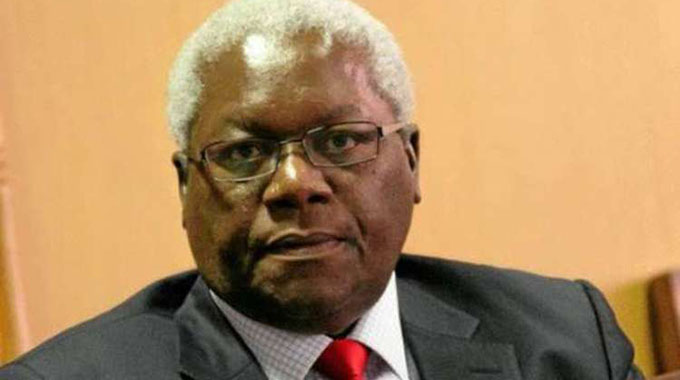Public-private partnerships and prison reform

Sharon Hofisi Legal Letters
When you look at Constitutional Hill in South Africa, you see a beautiful building incorporating parts of the old jail such as stairwells of the Awaiting-Trial section. The metaphor of a traditional African khotla or gathering of tribal elders meeting under a tree demonstrates the history of adjudication of disputes from the past to the present.
While architectural design speaks from the South Africa of the old to the new South Africa, we learn that the South African judiciary and justice delivery system at large is actually “looking forward by looking back”. Lawyers and non-lawyers witness the Great African Steps, built from bricks from the demolished jail buildings. Some who had visited Constitutional Hill describe their walk through or around various designs as “a walk between the past and the future, between apartheid and freedom”
Zimbabwe is currently fighting to transform the prison conditions and improve the general conditions in our remand and other prisons. With spirited interest, transparent and responsive public-private stakeholder cooperation we will win big. We just started a major walk of victory in calling for private actors to either buy or partner Government in building new prisons which cannot be rehabilitated or aren’t fit for human habitation.
And there is relief if you read in the mainstream media that so and so has bought Harare Central Prison, or that Harare Remand Prison is to be renovated — this sets the tone that Zimbabwe can make public-private partnerships work in the broader interests of justice, including the accused who is still facing trial but is remanded in custody or the one who has been convicted and is serving a custodial sentence.
Yes, planned government-private sector coherence pays dividends. In modern criminal justice systems, states innovate on ways to break away from a difficult past, metaphorically. South Africa used material from the old prison to build Constitutional Hill.
No need to destroy everything but the old and the new can work together for the rainbow growth of a nation with a difficult past.
Zimbabwe is slowly preparing a future based on the past, innovatively, and our expansive reformist legacy will make constitutional sense in the future. We can win. But without constitutionalised dimension on prisoners’ rights we cannot see the great benefit to be derived from the public-privatisation membrane.
Before we can celebrate scoring an unprecedented victory for decent prison life in Zimbabwe, we must together fight to transform our attitude towards prisoners’ rights — protected, promoted and respected by all of us — following the normative structure in our Constitution, using different resource pools.
I believe Government will launch effective Prison Challenges sooner or later to take the stakeholder partnerships a notch high. Every collaborative agreement doubles State commitment to fighting to improve prison conditions.
Out of a remand prison and hearing voices of transforming the prison walls into something come to the prisoner and his lawyer in different ways. The prisoner grapples with the best way to reconciling with his past inside the walls and how the future without those walls will make of him.
His lawyer may have visited the prisoner to take a few instructions to prepare some defence, bail response, trial preparation or to deal with some fresh allegations against the client. He cannot obviously understand how the client feels, inside prison walls. He can simply see the trauma or emotional suffering —which painfully demands his attention.
The pathway to rehabilitation/reform of the client may painfully come through prolonged or short periods of incarceration. The trier of fact may have denied the remanded prisoner bail pending trial (sending him/her to a remand prison), or upon conviction of an accused person, the sentencing court may prefer to choose retributive punishment, within prison walls (where he serves the full sentence)-normally with hard labor.
The prisoner’s lawyer, as part of the justice delivery system, usually becomes the prisoner’s friend in need and in deed. They confide in each other, raise issues of lawyer-client privilege and promise each other freedom in the end. Sometimes the lawyer brings the outside world to his client in family ways —news from friends, acquaintances and relatives on how they wish the
If the prisoner is a self-actor, he or she sees the walls, very tall walls. The eye of the self-actor or represented accused or convicted person is humanly the same — the eye is the only part of a human, which size doesn’t increase (I hear its size remains as same as at the time of birth).
In the end, we would want to see Zimbabwe effectively using the partnerships to deal with overwhelming prison population, health problems relating to HIV/AIDS, hepatitis B/C, TB and STIs prevention and treatment in prisons. We may learn from countries like Nigeria were boards led by human rights advocates and law enforcement officials were established together with appointment of functionaries who report to the President.
Alternatively we may decide to prioritise the signing of various conventions such as Convention against Torture and adopt various prison principles and guidelines such as Beijing Rules on juvenile justice, Basic Principles for Treatment of Prisoners, code of conduct for law enforcement agents, Death Penalty Safeguards, Principles of Medical Ethics, Robben Island Guidelines, Standard Minimum Rules on Prisoners, and Tokyo Rules on non-custodial measures over and above human rights instruments to which Zimbabwe is a part.
Together, Zimbabwean prison system will effectively achieve the seemingly elusive goal of prisoner reform and rehabilitation. How effective will it be to read that we have more open prison systems in Zimbabwe and prison nutrition, confined or crowded living quarters are a thing of the past, sexual assault, suicide and threats to prison security are also dealt with?
Sharon Hofisi is a UZ lecturer and is contactable at [email protected]









Comments